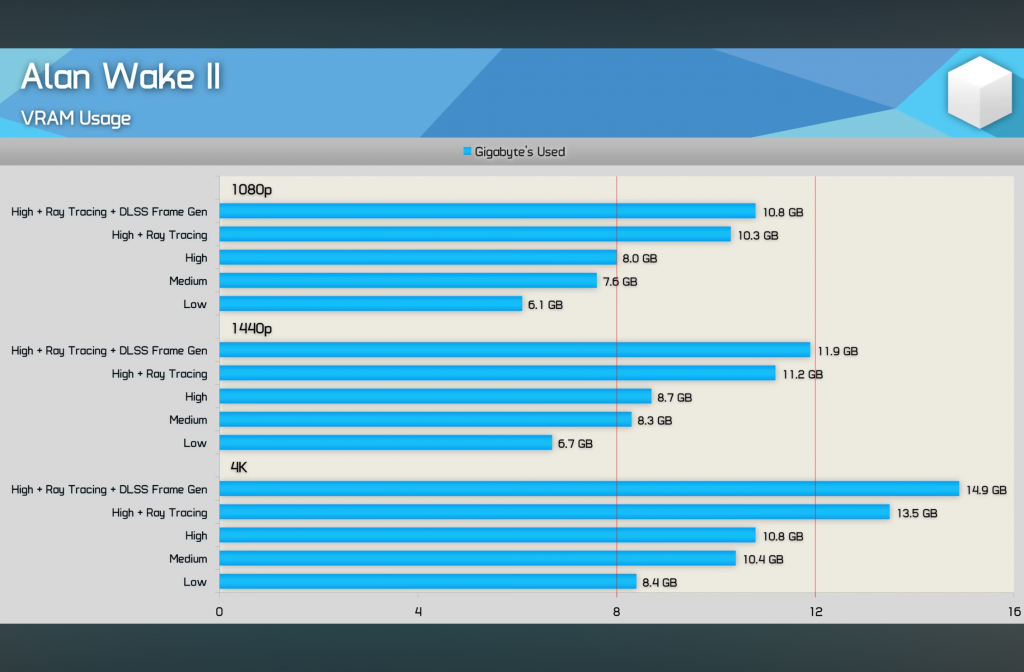
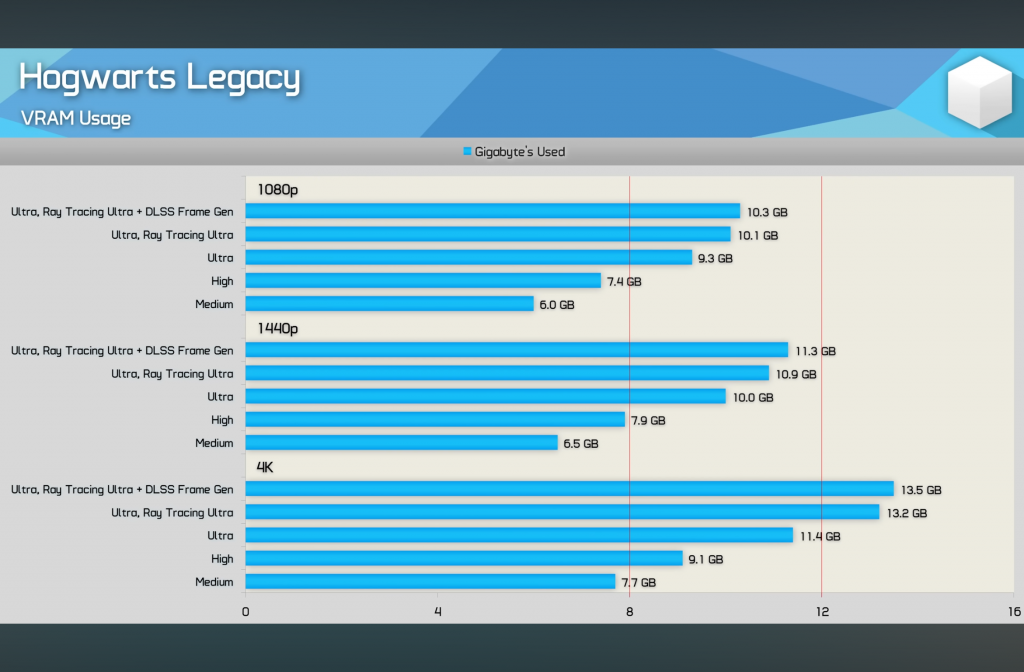
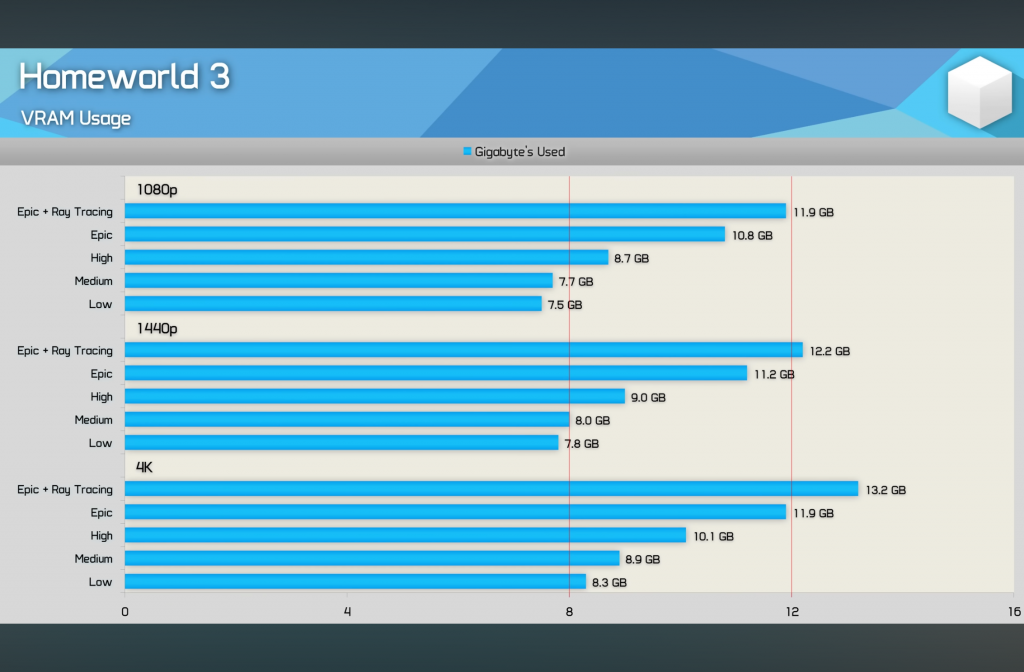
Full video here: https://www.youtube.com/watch?v=AdZoa6Gzl6s

After a year of training, the data is indisputable. One simply cannot train for a half Ironman by only running 5Ks. It was a valiant effort of intense interval training, but it is time to face facts: mileage matters. So armed with this new knowledge and further advice from the experts we are killing the 5K Ironman idea and replacing it with the far better 10K Ironman!
That’s right, I’m training for an Ironman, but only running 10Ks!
The basic principals remain: train for a Half Ironman – commonly referred to as a 70.3 (1.2 mi swim, 56 mi bike, 13.1 mi run) with minimal training miles and time.
How is this possible?
HIIT. That’s High Intensity Interval Training. Translated from trendy trainer lingo it means: running hard; really, really hard. HIIT is simply a fancy acronym for the same interval training which has been around for a long time. However, it is rarely applied to endurance race training which is traditionally running lots of miles at a moderate pace (ignoring limited “speed work” done on top of the massive mileage).
The New Plan
Background
I initially got into trisport because I needed a reason to workout and I enjoy both swimming and biking. I first set my sights on a Sprint Tri and then later an Olympic Tri. But I slowly fell out of it because training at long distances was too much of a time commitment. Then I went back to grad school and my free time all but vanished.
I got the idea from Tim Ferris’ book The 4 Hour Body that covers how intense interval training can substitute for moderately paced longer mileage training for marathons or even ultra marathons. His book includes a full training schedule with different intervals for different days (runners do seem to love complicated schedules – just pick up any running magazine), but I wanted something super simple, so I distilled Tim’s two chapters into this:
Progress
When I started in December 2013 I was only doing 2 min of 10 min/mi pace runs with 2 min walks, because grad school had gotten me completely out of shape. Now I’m doing things like running 7 min/mile half mile “sprints”, or 11 min/mile 10% incline “hill” intervals, or 62 minute 10K “races.” My resting heart rate has dropped from the high 90s to the low 50s.
Disclaimers
I feel like I should point out the fact that I hate running. It sucks. Unfortunately it is both effective and efficient at preparing my heart and body for an Ironman event.
The longest I’ve ever run is 10 miles. The longest I’ve ever swam continuously is ~55 min and ~1 mile. The longest I’ve ever biked is ~36 miles.
* I do not include my warm up (1 min walk/1 min run walk intervals at 5, 6, & 7 mph) and cool down (3 min walk) in my 10K interval distance. I do include the distance walking between the running portions of the main intervals.
#10KIronman
VO2 max is a measure of the maximum volume of oxygen that your body can use. As you increase your exercise effort, the amount of oxygen you consume increases to meet the greater demand to produce energy. However, there is a limit to each person’s oxygen consumption, and therefore a ceiling on your energy production and sustainable exercise effort. This measure which is computed in milliliters per kilogram of body weight per minute (ml/kg/min) is commonly used in running and to a lesser extent in cycling.
While some sports scientists argue that running performance is often first limited by other factors, such as muscle adaptation or running efficiency, others believe VO2 max is the key physiological determinant of an athlete’s running performance. Because of this many GPS enabled training watches (attempt to) track this metric. Below is a look into my Garmin’s Fenix 2’s sad attempt to determine my VO2 Max over the last year of training for an Ironman.
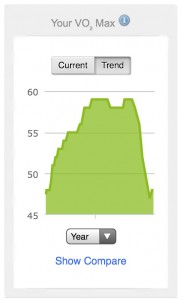
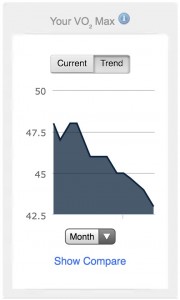
The pic on the left shows the trend from April 2014 when I got the Fenix 2 through September 2014. The pic on the right shows the trend for the month of October 2014. (The rest of 2014’s screen grabs were lost in a tragic iCloud incident)
While Garmin’s literature claims it computes one’s VO2 max due to a fancy algorithm analyzing only your heart rate monitor data, the sharp cliff on the end of the year view pic proves otherwise. The first dip in my otherwise rapidly rising maximum was when I took a run outside instead of on my treadmill. Seeing the change, I followed up with several more outdoor runs which resulted in my meteoric fall from VO2 max greatness. Apparently my Garmin was guesstimating my treadmill speed at much faster (and slower) than was, in fact, occurring. I hadn’t noticed this fact as my supposed 4 min mile pace runs were being offset by my 0 mph walks in my interval training. This resulted in a believable average pace (when I occasionally looked at it). But since I was mainly using the Garmin for the heart rate data and my treadmill for speed data it took that long for me to notice the issue.
Since learning of this, I’ve purchased a footpod and calibrated it so that the Garmin Fenix 2 accurately captures my indoor speeds. Sadly, even though my resting heart rate is on the verge of cracking into the 40s (stupid 50 bpm barrier), the Fenix 2 now reports my VO2 max as 43 placing me in the bottom 40% of men my age. Which is hopefully active men my age or its even more depressing.
As far as I can tell, the fancy algorithm is primarily looking at how fast you run for a sustained period to create this make believe number. This means 1) it requires a calibrated footpod to even have a chance of working indoors and 2) it really needs you to run at a constant pace – intervals really confuse it. So while this metric is worthwhile if properly measured (i.e. a sports facility treadmill test with a tube measuring your breathing), I’d take the “estimated” values with a large bag of salt. For a cheap and easy alternative metric grab something like this $20 pulse monitor and track your resting heart rate.
That’s right, I’m training for an Ironman, but only running 5Ks!
OK, OK. It’s a Half Ironman (1.2 mi swim, 56 mi bike, 13.1 mi run), because people that do full Ironman events are crazy. And I’m only half crazy. ;)
 How is this possible?
How is this possible?
Running hard. Really, really hard. While traditional endurance training is lots of miles at a moderate pace (ignoring “speed work”), I’ll be doing intense, interval style running. I mean if I can sprint up hill for 3.2 miles that would have to translate into the ability to run (or jog) a lot farther, right? …right???
Why are you doing this?
I initially got into trisport because I needed a reason to workout and I enjoy both swimming and biking. I first set my sights on a Sprint Tri and then later an Olympic Tri. But I slowly fell out of it because training at long distances was too much of a time commitment. Then I went back to grad school and my free time all but vanished.
I got the idea from Tim Ferris’ book The 4 Hour Body that covers how intense interval training can substitute for moderately paced longer mileage training for marathons or even ultra marathons. His book includes a full training schedule with different intervals for different days (runners do seem to love complicated schedules – just pick up any running magazine), but I wanted something super simple, so I distilled Tim’s two chapters into this:
The Plan
Progress
When I started in December I was only doing 2 min of 10 min/mi pace runs with 2 min walks, because grad school had gotten me completely out of shape. Now I’m doing things like running 7 min mile “sprints” for a half mile, or 12 min mile jogs up a 10% incline for 2 min intervals, or three 9 min 1 mile “distance” runs. Not great, but no longer embarrassing.
Disclaimers
I feel like I should point out the fact that I hate running. It sucks. Unfortunately it is both effective and efficient at preparing my heart and body to attempt the craziness that is the Ironman 70.3 in Galveston, Texas on April 26th.
The longest I’ve ever run is 10 miles. The longest I’ve ever swam continuously is ~55 min and ~1 mile. The longest I’ve ever biked is ~36 miles.
* I do not include my warm up (3 min walk then 1 min run walk intervals at 5, 6, & 7 mph) and cool down (3 min walk) in my 5K interval distance. I do include the distance walking between the running portions of the main intervals.
#5KIronman
There were some requests to get some more info on my interval specifics. I use a treadmill because it is so much easier to set speed and time than running out in the real world constantly glancing at your GPS watch.
This heart rate data includes my warm up (3 min walk then run 1 min at 5, 6, & 7 mph with 1 min walk between) and cool down (3 min walk) and 3 miles of actual interval running (3 min at 7 mph and 2 min walking both at 0.5% incline).